Philips' Lightring, a miniature taillamp for use on a seatpost.
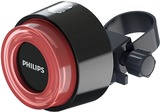
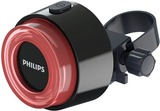
| [ Main index » Bicycle components tests » (Dynamo) bicycle lighting » Dynamo taillamps » Philips Saferide lightring taillamp | Dutch: Deze pagina in het Nederlands ] |
On the main page I wrote:
Philips' Lightring, a miniature taillamp for use on a seatpost.


When I got them, it was clear that they are actually pretty big...
Tested from: 2013-1-23
I ordered these expecting the same light type system as in the Lumiring, but I was disappointed... The light simply shines into the outer ring (via a lens) which has a diffuser on the inside. This is nowhere near the sophistication of the Lumiring. The size also seems far too big to me. Shining it on the wall at various distances I don't see a strong and big enough spot that stays the same shape, i.e. there is no section of collimated light, which would help for long distance visibility. There is also no reflector in the middle. I suppose it was clear in the pictures there was no reflector, though they are computer generated and not actual product photos, and such images are not always representative of the truth. So why no reflector?
You can't take off the lamp from the seatpost mount without unscrewing a tiny screw first. This is the anti-theft system I suppose. I found it hard to get it off at home, and I wouldn't like to fiddle attaching this screw on the bike after putting in new (or charged recheargeable) batteries. I can imagine dropping this somewhere outside while trying to screw it back in and never finding it again. I can also imagine the head of that tiny screw getting damaged from using a slightly wrong size phillips head screwdriver (I had to try a few screwdrivers, to find one I could use enough force with (as it was really stuck in the housing) without damaging the screw).
For the battery version I think it's just stupid that Philips made a slot to use a coin or screwdriver to turn the backplate to open the lamp to get at the batteries. There is a good way to turn the back, namely using the mount! If that part on the backplate had been put in the middle and had been made a little bigger it would be better, but as it is now, it works reasonably well and I prefer it to using a coin (which never works for me, also with bike computers, need to find the right size coin etc.) or screwdriver. Rotating the back plate doesn't work while the lamp is on the holder for the seatpost. I suppose this is to prevent the lamp from dropping off while riding.
Power consumption:
Battery version uses 41 mA at 3V, the dynamo version 53 mA on 6V DC. Brightness of both seems the same though, so the dynamo version's electronics has to be wasting a lot of power. There is also no standlight which again points to the fact that this lamp is nowhere near the sophistication of the Lumiring.
Using Eneloop rechargeable low self discharge NiMH batteries I found the red LED around the button comes on fairly quickly. Topping up the batteries shows they needed just 116-118mAh using the Maha 9000 charger, so they were almost full. This is the result of the difference of rechargeables being about 1.2V instead of 1.5V, even the top of about 1.35V (no load) is low compared to a non rechargeable battery.
From a recent comparison with the Philips Lumiring and Sigma stereo (see the comparison page on taillamps):
Long distance comparison of the Sigma Stereo, Philips Lumiring & Philips Lightring: I cycled towards them several times from ca. 300m, lights positioned at about 1m and another at near road level. This height difference didn't matter much in visibility... The Lumiring is best for close distance (not annoying, gives the feel of a solid object) and for long distance works just as well as the others, with very low power consumption, which shows the superiority of the optics and concept. The Sigma stereo also has a almost collimated section of light in the beam like the Lumiring which gives it long distance visibility with little power used. The lightring is perhaps a little better on winding roads (out of the direction of the 'almost collimated' part of the beams which go straight to the rear in a narrow cone, of the Lumiring and the Stereo) but the Lumiring is good enough. Do you really need to be seen further than say 200-300m if the road is meandering? It seems to me not, but if you have experience in such situations, and have some suggestions, let me know.
See the camera settings page for more on the setup and settings to make pictures of the beams of taillamps.
Out of a corner (showing how much light is cast upwards, forwards and to the sides) [ F3.9 & F1.8 ]:
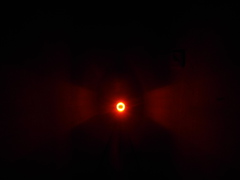
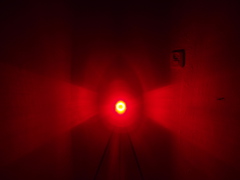
Wallshot (showing the beam pattern):
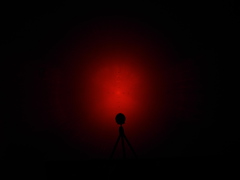
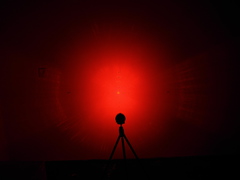
Visibility from various angles (0°, 45°, 90°, 135°) [ 0.5m, zoom x3, F3.5, ISO80, 1/250s & 1/60s ]:








See Theory for taillamps.
To come.
| To email me go to the email page |
Last modified: Sat Oct 26 05:54:13 CEST 2013